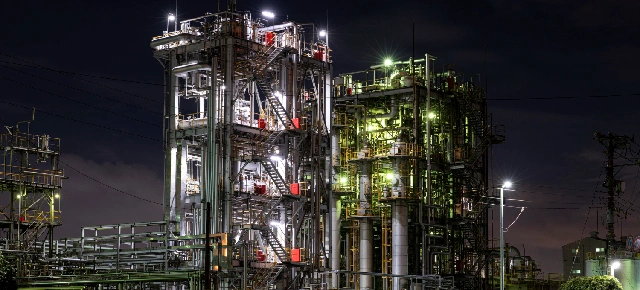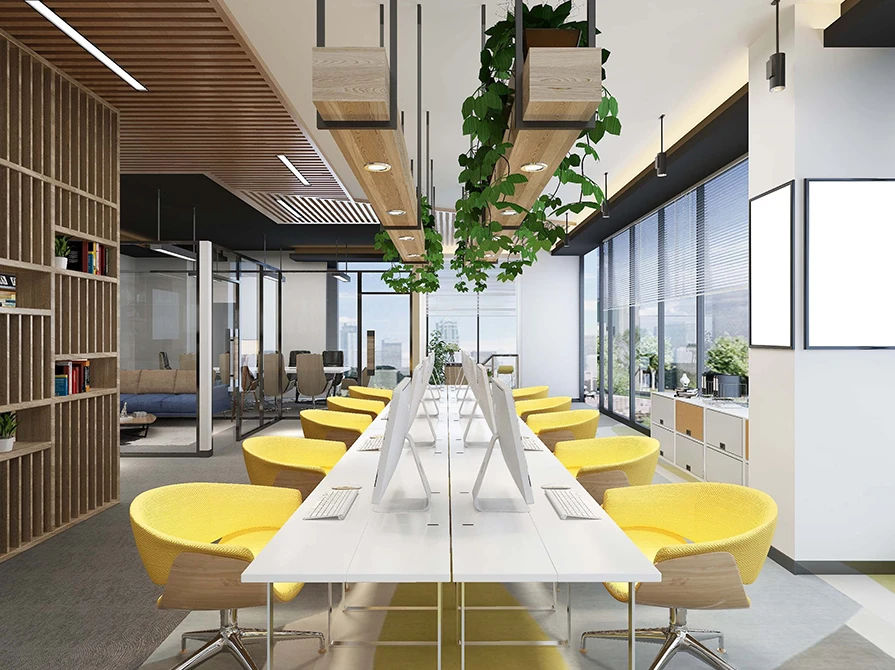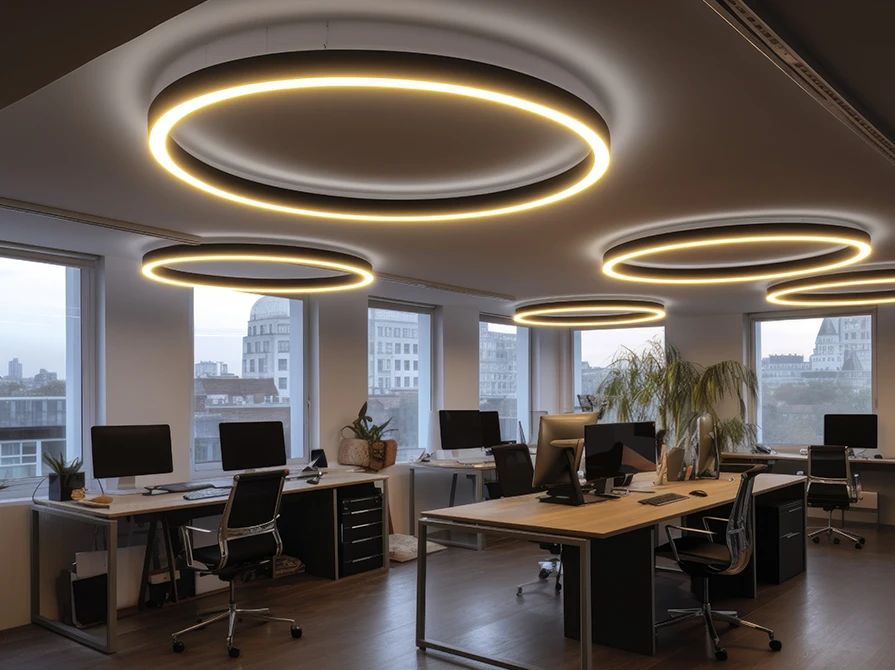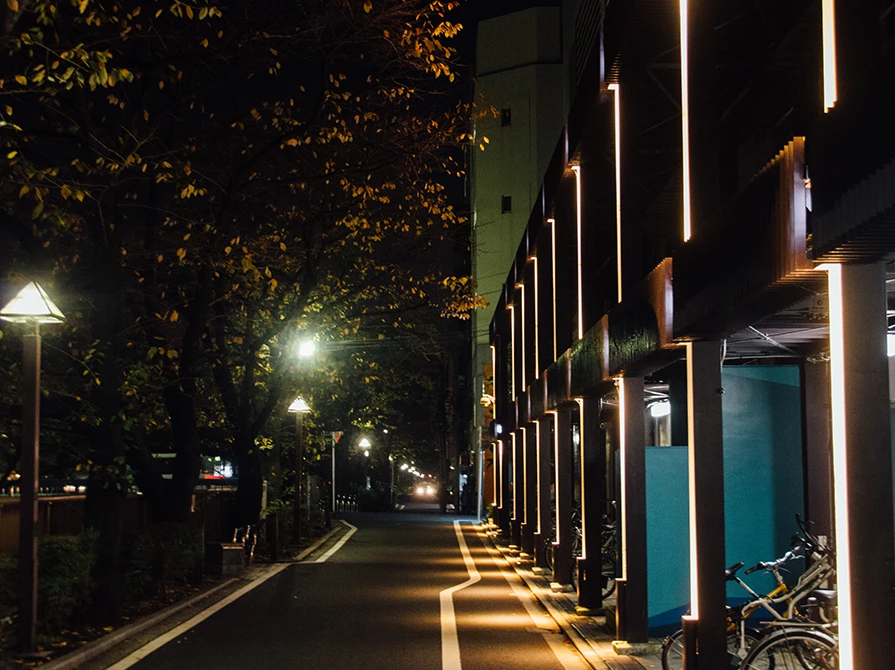


In industrial environments, lighting plays a crucial role in ensuring productivity, safety, and energy efficiency. However, not all industrial settings are created equal—many operate under extreme temperature fluctuations, which present unique challenges for traditional lighting systems. Whether it’s a steel mill with scorching heat or a cold storage facility operating at sub-zero temperatures, the ability of lighting systems to adapt to such extremes is vital for maintaining operational efficiency and safety.
This blog delves into the importance of resilient lighting solutions that are specifically designed to withstand wide temperature ranges, exploring the challenges these environments pose and how modern technologies can address them.
Industries like manufacturing, mining, cold storage, food processing, and oil and gas often operate in environments with severe temperature fluctuations. These changes can negatively impact standard lighting systems, leading to inefficiency, reduced lifespan, and safety hazards.
Industrial settings that experience extreme temperature fluctuations require lighting systems designed to withstand these harsh conditions. This specialized lighting helps to overcome the limitations of conventional systems, ensuring that industries can continue to operate efficiently and safely under challenging environmental conditions. Below are several key reasons why industrial lighting solutions need to be robust and resilient:
1. Material Durability
Lighting solutions used in extreme temperature environments must be built from materials designed to withstand both high and low temperatures. For example, in high-temperature zones like steel manufacturing plants, lighting systems need to incorporate heat-resistant materials such as high-grade metals and advanced heat-dissipating components to prevent degradation. In cold environments like refrigerated warehouses, anti-condensation coatings and corrosion-resistant materials ensure that lights do not succumb to moisture buildup or freezing conditions. Specialized seals and enclosures can also protect sensitive components from exposure to extreme weather elements, increasing the durability and lifespan of the system.
2. Maintaining Light Output in Harsh Conditions
The ability to maintain consistent light output in extreme temperatures is essential for worker safety and productivity. Traditional lighting solutions often struggle to perform consistently in fluctuating temperatures, which can lead to dimming, flickering, or extended warm-up times.
Modern industrial lighting systems, such as advanced LED fixtures, are designed to offer reliable, high-lumen output regardless of the surrounding temperature. In freezing conditions, LEDs can be programmed to turn on instantly without the need for warm-up, ensuring that workers have adequate lighting from the moment they enter the space. In high-heat environments, LEDs are designed to dissipate heat more efficiently than older technologies, reducing the risk of overheating or flickering.
3. Energy Efficiency and Sustainability
Modern lighting technologies, particularly LEDs, are inherently more energy-efficient than conventional lighting solutions such as incandescent or fluorescent bulbs. They consume less power, generate less heat, and can be paired with smart lighting control systems to further optimize energy use. For example, in cold storage facilities, motion sensors can be integrated with lighting systems to ensure that lights are only on when needed, reducing unnecessary energy expenditure.
Additionally, daylight harvesting solutions in industrial settings can automatically adjust artificial lighting based on available natural light, further optimizing energy consumption. These energy-efficient lighting systems can dramatically reduce the operational costs of temperature-intensive environments while contributing to sustainability goals, such as lowering carbon footprints and supporting green building initiatives.
4. Reduced Maintenance and Downtime
In industries with extreme temperature fluctuations, downtime caused by lighting failures can be particularly costly. Standard lighting systems often require frequent repairs or replacements, leading to significant maintenance expenses and lost productivity.
Specialized industrial lighting solutions are designed for longevity in harsh environments. By incorporating durable materials and advanced technologies that can withstand wide temperature ranges, these systems require less maintenance and offer extended lifespans. For example, LED lights not only last longer than traditional lights but also have fewer components that can degrade under extreme conditions. Additionally, smart lighting solutions with automated diagnostics can alert maintenance teams to potential issues before they escalate into major failures, helping to minimize downtime and reduce operational interruptions.
5. Enhanced Worker Safety and Productivity
Safety is paramount in industrial settings, especially those with extreme temperature fluctuations. Poor lighting can lead to accidents, injury, and reduced productivity. Workers need consistent, high-quality illumination to safely operate machinery, perform tasks, and navigate through industrial facilities.
Specialized lighting solutions for temperature-intensive environments provide consistent, bright illumination that enhances visibility and reduces the risk of accidents. For instance, in cold storage facilities where poor lighting can lead to slips, trips, or other safety hazards, specialized lighting ensures that workers can see clearly and move safely throughout the space. In hot environments, high-quality lighting reduces eye strain and fatigue, enabling workers to maintain focus and accuracy during their tasks.
Industries operating under extreme temperature fluctuations require lighting systems that are resilient, energy-efficient, and designed to endure the challenges posed by these environments. Specialized industrial lighting solutions address the limitations of traditional systems by providing durable materials, consistent performance, reduced maintenance needs, and optimized energy consumption.
By investing in resilient lighting solutions, temperature-intensive industries can improve operational efficiency, enhance worker safety, reduce energy costs, and contribute to sustainability efforts. In today’s rapidly evolving industrial landscape, lighting is more than just an operational necessity—it is a critical component of resilience, efficiency, and success. Get in touch with us to know more about how our lighting solutions can adapt to the fluctuating temperature in your industrial environments







